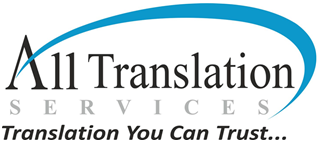How to Translate Your Brand Name: Tips for Successful Globalization
___Translating brand names can be a complex task that requires careful consideration of linguistic, cultural, and marketing factors. Here’s an approach we should consider when translating brand names:
Looking for a local language translation service provider in Surrey, Toronto, Vancouver, Windsor or in Winnipeg? Our Toronto translation company will be happy to help you.
Understand the Brand Identity and Values: Before translating a brand name, thoroughly understand the brand’s identity, values, and the message it wants to convey. Consider the emotions and associations the original brand name evokes in its target market.
Linguistic Analysis: Analyze the phonetics, phonology, syntax, and morphology of the original brand name. Pay attention to any unique sounds, syllables, or letter combinations that might be challenging to translate directly.
Cultural Sensitivity: Cultural sensitivity is crucial. Make sure the translated brand name is appropriate and doesn’t unintentionally offend or misinterpret cultural nuances in the target market. Consider any cultural taboos, historical connotations, and linguistic customs.
Transliteration vs. Translation: Decide whether a transliteration (writing the brand name in the target language’s script while retaining its pronunciation) or a translation (finding an equivalent meaning in the target language) is more suitable. Transliteration can help maintain brand recognition, while translation can adapt the name for cultural understanding.
Creative Translation: If you’re opting for translation, think creatively about how to convey the brand’s essence in the target language. Consider using metaphors, wordplay, or culturally relevant references to create a similar emotional impact.
Check Availability: Ensure that the translated name is available for trademark registration in the target market. Legal considerations are crucial to avoid future disputes.
Pronunciation and Ease of Use: Assess how easily the translated brand name can be pronounced and remembered by the target audience. A brand name that’s hard to pronounce might not gain popularity.
Market Research: Conduct market research to gather feedback from potential consumers in the target market. Understand how they perceive the translated brand name and whether it resonates with them.
Test Marketing: Consider test marketing the translated brand name before a full launch. This could involve a limited release to assess consumer reactions and make adjustments if necessary.
Consistency in Branding: Ensure consistency across all aspects of branding, including logo design, packaging, and advertising materials. The translated brand name should seamlessly integrate into the overall brand strategy.
Adaptation over Literal Translation: In some cases, a direct translation might not capture the essence of the brand. In such instances, consider adapting the name to convey a similar sentiment or concept rather than sticking strictly to a literal translation.
Legal and Linguistic Expertise: Consult legal experts and linguists who are familiar with both the source and target languages. They can provide valuable insights into both linguistic and legal considerations.
Flexibility and Open-Mindedness: Be prepared to adjust the approach based on feedback and changing circumstances. Flexibility is key to finding the most effective translated brand name.
Remember that the goal of translating a brand name is to maintain its impact and recognition while making it culturally relevant and meaningful in the target market. It’s a delicate balance that requires a thorough understanding of both linguistic and cultural nuances.
